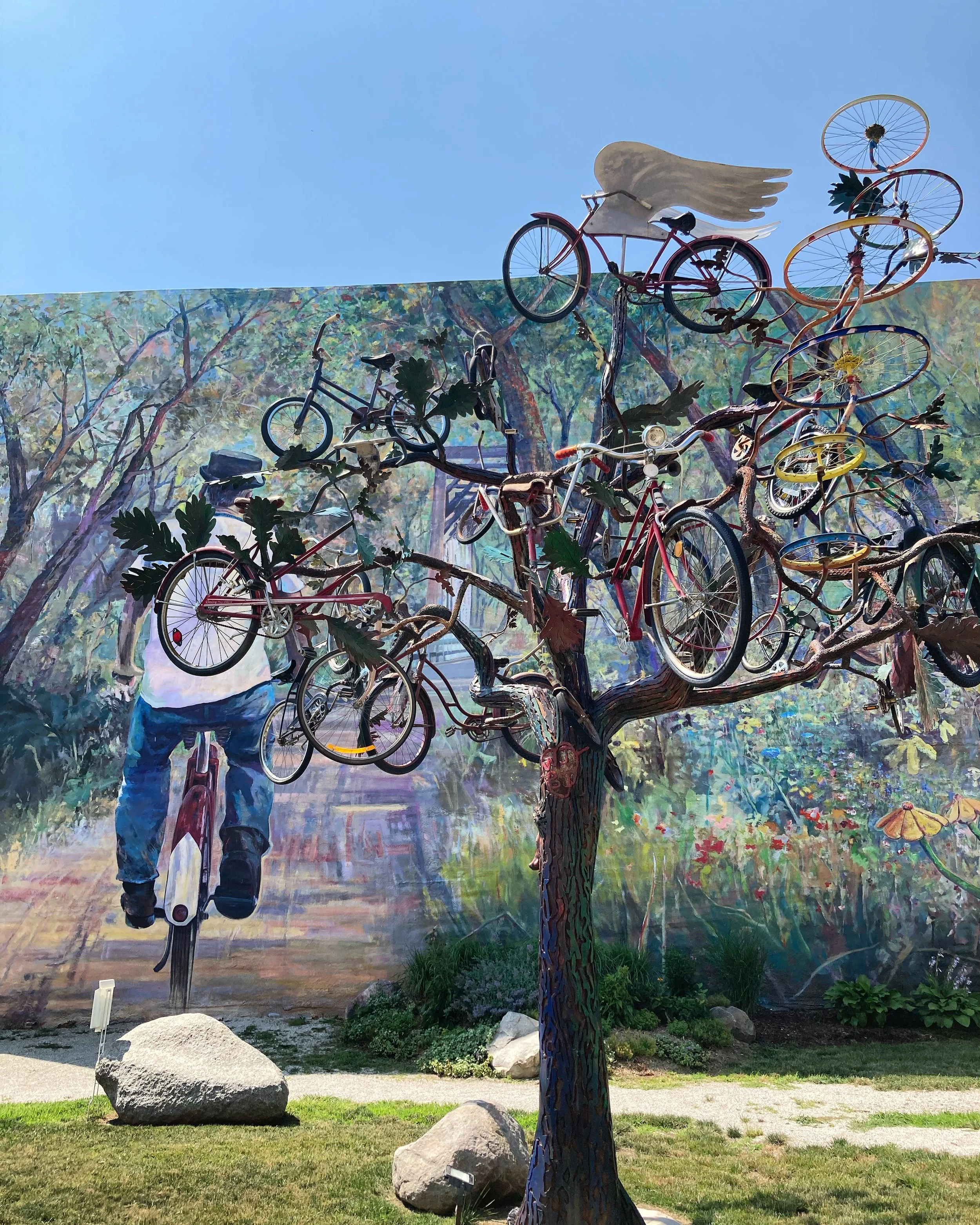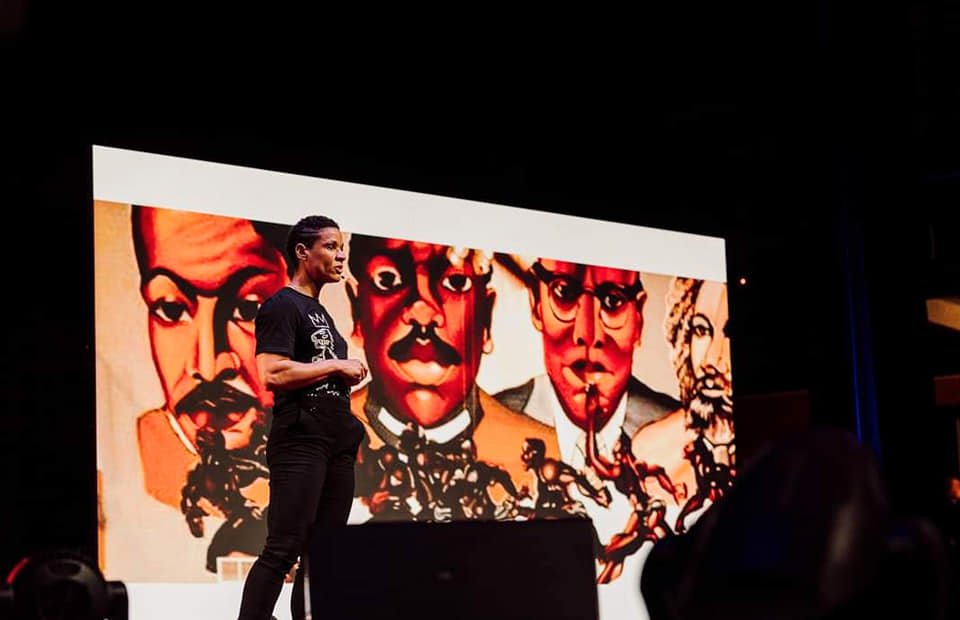I once taught a class at Iowa State University on how to run a gallery and how to use the gallery to engage the local community. One of the first classes each semester was on how to install an art exhibition. This involved spreadsheets, cleaning supplies, post-it notes, levels, drills, and lots of math. I get a lot of questions from friends and family on the reg about where and how to frame and hang their art, so I thought I would share some insight.
Read MoreWelcome back! For the past two weeks, we’ve discussed why you should begin an art collection, and how to start an art collection. This final segment is a best-practices-approach to buying art: connecting with artists, supporting their practice, and purchasing their work.
Read MoreMaybe you definitely would like to support more artists and buy more art, and you have no idea where to begin. You’re in luck! Here are a couple steps to get you clear on the art and artists you’d like to support, plus a few ideas on how to find these wonderful folks.
Read MoreTrue confession: It took me 34 years to call myself an artist. I’m embarrassed to say that I associated that label with a whole mess of bad connotations that I mistakenly bought into and wanted to avoid. I also had major imposter syndrome, and being told by a former professor that I didn’t have any talent really didn’t help matters.
Read MoreI made a short video about the creation of Ingrained Care, a new painting inspired a conversation I had in 2019 with Drick Rodgers and Julia Rodgers Clark in Rolling Fork, Mississippi.
Read MoreRecently, I co-facilitated How Can Community Arts Help People Feel Like They Belong in Your Town?, a Small City Workshop for the Iowa League of Cities.
This workshop is part of the Rural Shrink Smart initiative, a interdisciplinary team funded by the National Science Foundation that's exploring how to increase the quality of life in rural communities with shrinking populations.
When I first started working for Iowa State Extension and Outreach, I learned to focus on the assets a town has and not on their deficits. I’ve found this to be so helpful and so effective. I grew up in Mississippi and I’ve lived in Iowa for the last 15 years. In both states, I spend a lot of time driving around and listening the stories. It’s the best part of my job. In each new community I visit, I inevitably meet hear about someone doing some really creative thing to make their community better. These folks are scrappy – pulling together local resources and assets and talents together that’s grassroots, creative, and locally impactful.
Read MoreLast month, I was invited to participate in the Placemaking in Small & Rural Communities Virtual Conference hosted by the amazing Arts Extension team at the University of Kentucky. (They are the OG of community arts extension and rural placemaking.)
I thought I’d share a few key points from that presentation over the next few weeks, including 4 common themes that I’ve noticed in effective and inclusive rural placemaking efforts.
Read MoreA topic that arises fairly frequently in my work is:
How can I support artists if:
I can’t afford to buy their work,
I’ve already bought their work/seen their performance
I don’t have room for their work in my home,
I can only buy so many books, see so many performances, etc, etc, etc.
Well, friend, this list is for you.
Read MoreMost of you know that I teach. A majority of my artist friends teach. We for many reasons, in many ways and in many roles. We teach K-12 with a rolling cart, we teach in colleges and universities, we teach in community spaces, we teach in our studios, we teach online. Today I’d like to focus on how two fabulous artists who teach: painter Annie Guldberg and fiber artist Jean Haley.
Read MoreI can think of no one who’s a better and more generous community-builder than Derek Covington Smith, my friend and fellow artist from Brookhaven, Mississippi.
Case in point…
Read MoreIf I had a dollar for every time I’ve been asked that in the last 12 months, I could probably take a pretty nice weekend somewhere. It’s one of those questions that I never have a decent and coherent answer to, and in the spirit of self-betterment, I thought it was time to hold myself accountable.
All of the following are true. Some are true more days than others.
Read More“Without the foundation of the wheel, it would be difficult to produce movement. It was the wheels of those wagons that propelled the Poor People’s Campaign forward, and those wagon wheels will now be parted permanently along the Mule Train Interpretative Trail”, Katrina Rankin, Emmy Nominee, “The Mule Train: Poor People’s Campaign Continued” Documentary.”
Read MoreHey, can we start Community New Years Resolutions? Is that a thing? Can we make it a thing?
And more specifically, can those community resolutions be geared on your local art community? Sound good? You with me, here? Great. :)
Behold. 13 Tips to Better Support Your Local Artists.
(I’ve made it easy for you. One for each month, plus a bonus.) And May I suggest you bringing a couple to your next civic meeting to brainstorm? Y’all can do a lot with a little focus.
Read MoreI’m so thrilled to end the year with an interview of Anna Jinja Kees, my friend and all around amazing human being. Anna and I connected this year through our mutual friend, Akwi Nji, and became instant friends. Also Ames-based, Anna’s energy is uplifting, inspiring, and infectious. She’s one of those folks who infuses every conversation, gathering, and organization with connection, creativity, and empowerment. Ames sure is lucky, that’s all I’m saying.
Read MoreI first saw Ames-based artist Kaleb Stevens (known artistically as KUB) perform back in early 2020 at the Black Arts and Music Festival at the Ames Public Library and immediately began following his work. In addition to being a full-time student, and an active community-driven artist, Kaleb also serves as the Planning and Engagement Coordinator for UnEvictIA, a placemaker for Des Moines-based Group Creatives Services, and was most recently an intern for the Center for Artistic Activism, an international organization providing training and support for artist activists. Needless to say, I was really excited when Kaleb agreed to be interviewed as part of For the Common Good.
Read MoreI don’t know how to knit. That is significant for two reasons. First, as a community art specialists and an academic, I’m supposed to know how to do things. Second, and more surprisingly, in 2016, I organized Intertwine, a project involving 125 makers from across the country to yarn bomb ISU Design on Main, a storefront in downtown Ames that was a former satellite studio facility for Iowa State University’s College of Design and included a community gallery space.
Read MoreIf you live in Iowa, you likely don’t need an introduction to Des Moines artist Jill Wells. Her creative impact can be found in communities across the state, from her murals in Iowa City to her Artist X Advocacy mentorship program in Des Moines.
Read MoreSay what?
Artist who?
In a sentence, Artist Relocation Programs attempt to lure artists to live and work in their communities, knowing full well that artists can transform places.
Read MoreJennifer Brockpahler is one of the hardest working people I know. Hands down.
This woman gives of herself tirelessly to our community as the director of the Ames Community Arts Council, which is her second full-time job. (It’s no secret that many nonprofit art positions can only offer funding on a part-time basis and usually without benefits, requiring folks to make sacrifices and work A LOT.)
As the Ames Community Arts Council (ACAC) director, Jen oversees a multitude of community arts projects, mentors interns, and builds creative partnerships across Story County.
Read More


















